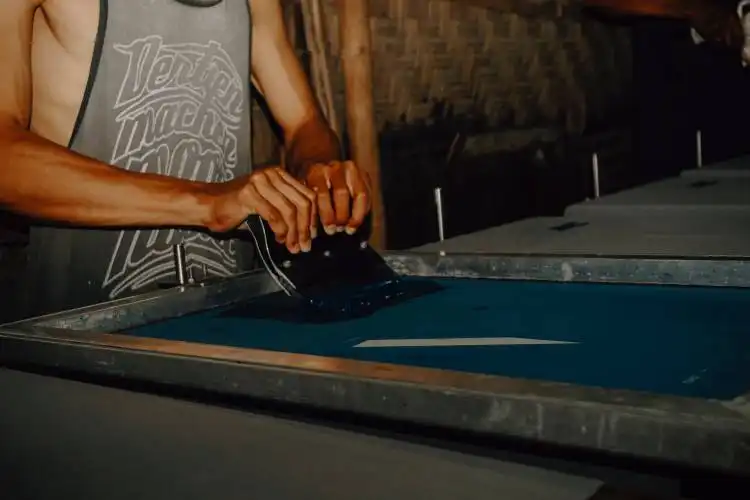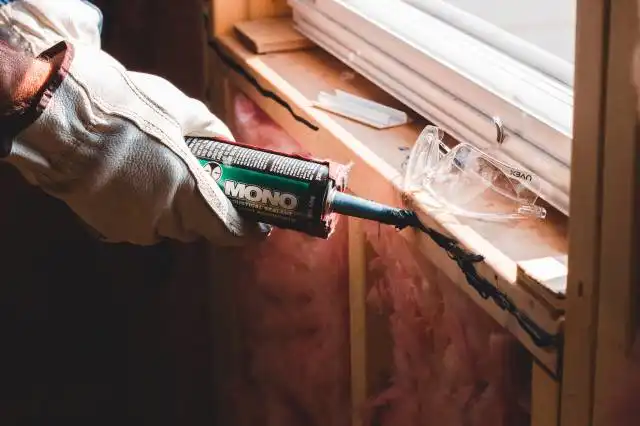Start an Art Gallery
Painting the Town: Transforming Your Love for Art into a Thriving Business
| Updated


ART GALLERY
Imagine turning a passion for art into a thriving hive for artists and admirers! Starting an Art Gallery is a fantastic business idea with a flair of creativity and business acumen. Your establishment will become a platform where artists showcase their work, and art lovers come seeking additions to their collections or simply to appreciate the beauty. So put on your curator's hat, and let's serve some visual feasts to our audiences!
Jump to Business Plan
RELATED BUSINESS IDEAS
Browse ALL Arts & Crafts Business Ideas
Discover Your Perfect Domain
Unlock the door to your online success with our hand-picked selection of premium domain names. Whether you're starting a new venture or rebranding an existing one, the right domain can set the tone for your digital presence. Browse through our curated list, each with its unique potential to enhance your brand's visibility and credibility.
ART GALLERY MINI BUSINESS PLAN
This a quick reality check to help you identify the strengths and weaknesses of your business concept before you dive in.
Expected Percent Margin:
- Gross Margin: 30-50%, often determined by the consignment deal with artists.
- Net Profit Margin: 10-15%, after accounting for operating expenses.
Earnings Expectations:
- Daily Earnings: $150 - $500, depending on traffic and purchase rates.
- Weekly Earnings: $1,050 - $3,500
- Monthly Earnings: $4,500 - $15,000
- Annual Earnings: $54,000 - $180,000
Actions to Hit Those Numbers:
Inventory Management:
- Initial Investment: At least $20,000-$50,000 for art investments and interior design.
- Artist Network: Foster relationships with emerging and established artists for a diverse catalog.
Marketing and Customer Acquisition:
- Social Media & Online Presence: Regularly update with new artworks and events.
- Networking: Attend art events to meet potential buyers and artists.
Sales and Customer Experience:
- Staffing: Hire staff appreciative of art who can serve as excellent guides to your gallery.
- Exhibitions and Events: Hosting regular events helps increase visibility and sales potential.
Cost Control:
- Rent: Rent can be one of the highest cost in art galleries, choose wisely with your location.
- Shipping, insurance, and art maintenance: Regularly monitor these costs and find ways to be efficient.
Business Operations:
- Open Hours: Arrange for the gallery to be open for at least 5-6 days a week and consider offering private viewings.
- Art Rotation: Consistently rotate and refresh artwork for return visitors.
Keep in mind, these are estimated numbers and will vary greatly depending on your location, the artists you work with, and overall business execution. Always consult with a financial advisor for personalized advice.
NOT WHAT YOU HAD IN MIND? Here are more ideas



Browse ALL Arts & Crafts Business Ideas
Grab Your Business Website Name
Before you get caught up in the whirlwind of setting up your business, invest in a domain name. It's a small but significant step that lays the foundation for your brand and makes it easier for customers to find and trust you. Just like you wouldn't build a house without securing the land first, don't build a business without securing your domain name.
"Why? Can't that wait?" Here's why it shouldn't
Step 1: Determine if Starting an Art Gallery is Right for You
Breakdown of Startup Expenses
Before starting an art gallery, it is important to understand the startup costs associated with the business. These costs can include the cost of renting a space, purchasing furniture and fixtures, and any other necessary equipment. Additionally, you will need to consider the cost of insurance, licensing fees, and any other fees associated with running a business. It is important to understand these costs before beginning the process of starting an art gallery.
Breakdown of Ongoing Expenses
In addition to the startup costs, it is important to understand the ongoing expenses associated with running an art gallery. These expenses can include the cost of rent, utilities, insurance, and any other necessary expenses. Additionally, you will need to consider the cost of marketing, advertising, and any other expenses associated with keeping the business running. It is important to understand these costs before beginning the process of starting an art gallery.
Examples of Ways to Make Money
There are many different ways to make money when running an art gallery. These can include selling artwork, hosting events, and offering classes. Additionally, you can offer services such as framing, restoration, and appraisals. It is important to understand the different ways to make money before beginning the process of starting an art gallery.
Step 2: Name the Business
When it comes to naming a business, it is important to choose a name that is memorable, unique, and meaningful. It should also be easy to pronounce and spell. Additionally, it should be appropriate for the type of business being started. For example, an art gallery should have a name that reflects the art that it will be selling. It should also be easy to find online and in other forms of media.
When considering a name, it is important to consider the potential for trademark infringement. It is important to make sure that the name is not already taken by another business. Additionally, it is important to consider whether the name is available as a domain name. If it is not available, it may be possible to purchase the domain name from the current owner.
Finally, it is important to consider the potential for the name to be used in other forms of marketing. For example, if the name is too long or difficult to pronounce, it may not be effective in radio or television advertising. Additionally, it is important to consider the potential for the name to be used in print advertising, such as flyers or posters.
Step 3: Secure Funding
The third step in starting an art gallery is to secure funding. There are several sources of funding available to entrepreneurs, including grants, loans, and private investments. Grants are a great option for those who are just starting out, as they do not require repayment. Loans are also an option, but they must be repaid with interest. Private investments are also an option, but they require giving up a portion of the business’s ownership.
Create a Business Plan
In order to secure funding, a business plan must be created. A business plan should include an executive summary, a description of the business, a market analysis, a competitive analysis, a description of the products or services offered, a marketing plan, and financial projections. It should also include a detailed budget that outlines the startup and ongoing costs associated with the business.
Seek Investors
Once a business plan is created, entrepreneurs can begin seeking investors. This can be done through networking, attending events, and using online resources. It is important to be prepared to answer questions about the business and to make a compelling case for why an investor should invest in the business.
Secure Financing
Once the necessary funding is secured, entrepreneurs can begin the process of securing financing. This can be done through banks, credit unions, and online lenders. It is important to compare interest rates and terms to ensure the best deal is secured. It is also important to ensure that the loan is affordable and that the business can make the necessary payments.
Step 4: Find a Location
When choosing a location for an art gallery, there are several factors to consider. First, the location should be in an area that is easily accessible to the public. It should also be in a place that is known for its art and culture. Additionally, the location should have plenty of foot traffic and be in close proximity to other art galleries. Finally, the space should be large enough to accommodate the art gallery's needs.
Researching Potential Locations
Once the ideal location has been identified, it is important to research the area thoroughly. This includes researching the local zoning laws, the cost of rent, and any other fees associated with the space. Additionally, it is important to research the local competition and the demographics of the area. This will help the business owner determine if the location is the right fit for their art gallery.
Securing the Location
Once the research is complete, the business owner should contact the landlord or property owner to secure the space. This includes negotiating the terms of the lease and any other agreements that need to be made. Additionally, the business owner should also make sure that the space meets all of the necessary requirements for an art gallery. This includes making sure that the space is up to code and that all of the necessary permits and licenses are obtained.
Finalizing the Lease
Once all of the necessary paperwork is completed, the business owner should finalize the lease. This includes signing the lease and making sure that all of the terms and conditions are agreed upon. Additionally, the business owner should also make sure that all of the necessary insurance policies are in place. This will help protect the business in case of any unforeseen circumstances.
Step 5: Obtain Necessary Licenses and Permits
Before opening an art gallery, it is important to understand the types of licenses and permits that are necessary to operate a business. Depending on the location, the types of licenses and permits needed may vary. Generally, a business license, a seller’s permit, and a zoning permit are required. A business license is necessary to operate a business in the eyes of the law. A seller’s permit is necessary to collect sales tax from customers. A zoning permit is necessary to ensure the business is operating in a legal area.
How to Obtain Licenses and Permits
The process of obtaining the necessary licenses and permits can be done online or in person. It is important to research the specific requirements for the area in which the business will be located. Once the requirements are understood, the business owner can apply for the necessary licenses and permits. It is important to note that the process of obtaining licenses and permits can take several weeks or even months. Therefore, it is important to start the process as soon as possible.
Cost of Licenses and Permits
The cost of licenses and permits varies depending on the location. Generally, the cost of licenses and permits can range from a few hundred dollars to a few thousand dollars. It is important to research the cost of licenses and permits in the area in which the business will be located. Additionally, it is important to factor in the cost of licenses and permits when creating a budget for the business.
Professional Assistance
If the business owner is unsure of the process of obtaining the necessary licenses and permits, it is important to seek professional assistance. Professional assistance can be obtained from a lawyer or an accountant. A lawyer can provide advice on the legal aspects of the business, while an accountant can provide advice on the financial aspects of the business. Professional assistance can help ensure that the business is compliant with all local laws and regulations.
Step 6: Create a Business Plan
Creating a business plan is an important step in starting an art gallery. A business plan should include an executive summary, a description of the business, a market analysis, an organizational structure, a description of the products and services, a marketing plan, a financial plan, and an appendix.
The executive summary should provide an overview of the business, including the purpose of the business, the target market, the competitive advantage, the financial projections, and the management team.
The description of the business should include the purpose of the business, the mission statement, the legal structure, the location, the history of the business, and the ownership structure.
The market analysis should include an analysis of the current market, an analysis of the target market, an analysis of the competition, and an analysis of the pricing structure.
The organizational structure should include the roles and responsibilities of the management team, the organizational structure of the business, and the organizational structure of the products and services.
The description of the products and services should include a description of the products and services offered, the pricing structure, and the competitive advantages.
The marketing plan should include an analysis of the target market, a description of the marketing strategies, a description of the promotional activities, and a description of the advertising activities.
The financial plan should include a financial analysis, a cash flow analysis, a balance sheet, and a break-even analysis.
The appendix should include any additional documents that are necessary to support the business plan, such as resumes, contracts, and letters of reference.
Step 7: Market the Business
Once the business is up and running, it's time to start marketing it. There are a variety of strategies that can be used to market an art gallery. Social media is an excellent tool for marketing, as it allows for easy and free promotion. Creating a website and utilizing search engine optimization (SEO) can also help to drive traffic to the gallery. Additionally, creating relationships with local media outlets and utilizing traditional advertising methods such as print, radio, and television can help to spread the word about the gallery.
Networking
Networking is also an important part of marketing an art gallery. Building relationships with other galleries, artists, and art collectors can help to bring more customers to the gallery. Additionally, attending art shows, conventions, and other events can help to build relationships and increase visibility for the gallery.
Promotional Events
Organizing promotional events such as art shows, auctions, and other events can help to draw attention to the gallery. Additionally, offering discounts and other incentives can help to draw customers to the gallery.
Online Presence
Having an online presence is essential for any business, and art galleries are no exception. Creating a website and utilizing social media can help to spread the word about the gallery and attract customers. Additionally, having an online store can help to increase sales. Utilizing SEO and other online marketing strategies can also help to increase visibility for the gallery.
Step 8: Hire Employees
When hiring employees, it is important to look for certain qualities. These qualities should include a passion for art, knowledge of the art world, and a strong work ethic. Additionally, it is important to find someone who is organized and can manage the day-to-day operations of the gallery. It is also beneficial to find someone who is familiar with the local art scene and can help to promote the gallery.
Where to Look for Employees
When looking for employees, it is important to look in the right places. Start by looking for people who are already in the art world, such as local art schools or other art galleries. Additionally, look for people who have experience in the business world, such as those with a background in marketing or accounting. Finally, consider using online job boards or social media to find potential employees.
Interviewing Potential Employees
When interviewing potential employees, it is important to ask questions that will help to determine if they are a good fit for the gallery. Ask questions about their experience in the art world, their knowledge of the local art scene, and their understanding of the business side of running a gallery. Additionally, ask questions about their work ethic and their ability to handle the day-to-day operations of the gallery.
Training Employees
Once the right employees have been hired, it is important to provide them with the necessary training. This should include training on the gallery's policies and procedures, as well as training on the art world and the local art scene. Additionally, provide training on the business side of running a gallery, such as marketing and accounting. Finally, provide training on customer service and how to interact with customers.
Step 9: Open the Business
The opening of a business is an exciting time, but it can also be a stressful one. To ensure a successful opening, it is important to plan ahead and make sure that all the necessary preparations have been made. It is important to create a grand opening plan that includes marketing and promotional materials, such as flyers and posters, to spread the word about the new business. Additionally, it is important to create a budget for the opening and to plan for any unexpected expenses. It is also important to create a plan for the day of the opening, including a timeline of events, and to make sure that all necessary staff and supplies are available. Finally, it is important to create a plan for the days and weeks following the opening, including a plan for follow-up marketing and customer service.
Maintaining the Business
Once the business is open, it is important to maintain it in order to ensure its success. This includes staying up to date with the latest trends in the art industry, as well as keeping up with customer feedback and reviews. Additionally, it is important to create a budget and stick to it in order to ensure that the business is profitable. It is also important to create a plan for marketing and promotions, as well as for customer service. Finally, it is important to stay organized and to keep track of sales and inventory in order to ensure that the business is running smoothly.
EXPLORE MORE CATEGORIES
Browse ALL Business Idea Categories
TAKE THE NEXT STEPS










